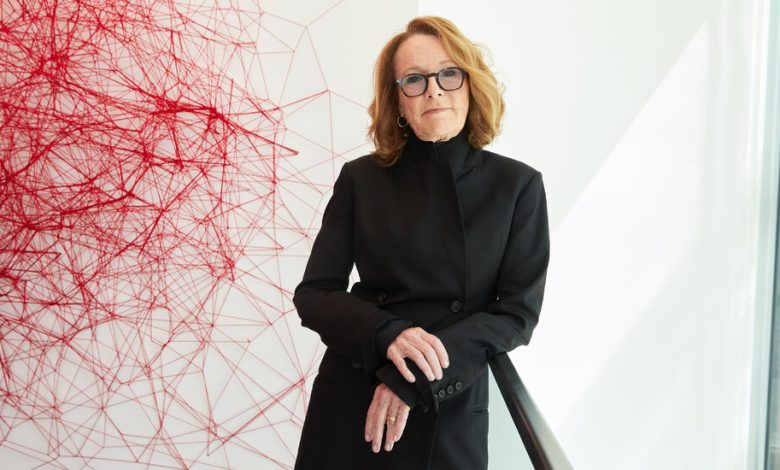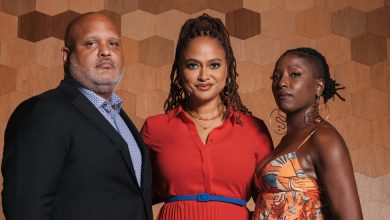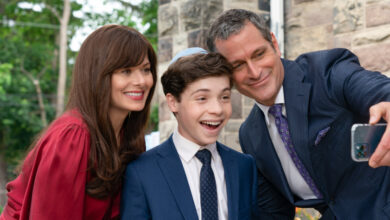Ann Philbin, Who Remade L.A.’s Hammer Museum, to Step Down

Ann Philbin, who turned the Hammer Museum into a destination for contemporary art during nearly 25 years as its director and helped transform the cultural landscape in Los Angeles, will step down next year, the museum announced on Wednesday.
Philbin’s decision marks a turning point in the city’s art world and opens a high-profile position as several other prominent institutions across the country have recently undergone leadership changes, including the Whitney Museum of American Art in New York, the San Francisco Museum of Modern Art and the Philadelphia Museum of Art.
Under Philbin, the Hammer — initially built by the industrialist Armand Hammer to display his collection of old masters and other works — embraced contemporary art and became an important platform for emerging and underappreciated artists with an emphasis on social justice.
“She made it into a major museum that has an international reputation,” said Adam D. Weinberg, the director of the Whitney. “Annie will go down as one of the great museum directors of her generation.”
With the help of an outside search firm, the Hammer board will choose a successor that it will then propose to the University of California, Los Angeles, which took over the management of the museum after Hammer’s death. In a period of heightened awareness about the scarcity of Black and Latino museum directors, Marcy Carsey, the Hammer’s chairwoman, said that the search would include a diverse pool of candidates.
Carsey said Philbin’s shoes would be hard to fill.
“The Hammer is Annie and Annie is the Hammer,” she said. “I don’t remember any organization being affected so much by a single person.”
Philbin, 71, who plans to step down on Nov. 1, 2024, said in an interview over lunch at her office that she hadbeen contemplating leaving since the pandemic.
“It made me think about how short life is, but also think about what’s best for this institution,” she said. “There is a generational shift happening — it’s a really important moment — and it’s time for the next person to come into this place and take it to the next level.”
Part of that generational shift will require an ability to grapple with new challenges, including the rise of artificial intelligence, diversity issues, labor strife and work-life balance.
But there is a core identity to the Hammer that Philbin said she would like to see endure: “To pay attention to the things that are hidden or emerging or unknown.”
“I hope that will always be something this museum does,” she continued, “because it is unique the way that we do it.”
Philbin, who exudes both warmth and toughness and is known as a fierce champion for artists, said that she had largely accomplished what she set out to do.
She built up the museum’s staff and expanded its budget from $6 million to $30 million and its endowment from $35 million to over $125 million. During her tenure, the museum has added more than 4,000 pieces of contemporary art to its collection.
The Hammer has also become a hub of artistic ferment as well as a gathering place for lectures, parties and lunches (at its popular Lulu restaurant). The museum’s annual fund-raising “Gala in the Garden” has also become a celebrity-studded event.
And she upgraded the building, with a $90 million stop-and-start renovation project that recently concluded.
“I watched her build the Hammer into what it is today,” said the artist Mark Bradford, adding that Philbin did so “quietly” and “with a lot of grace.”
“Suddenly you look at the building and it’s twice as big as it was,” Bradford added. “Diversity, equity and inclusion were already in the program. She’s been there to support the artists’ vision over and over again.”
Philbin came to the Hammer in January 1999, after nine years as director of the Drawing Center in New York. Under her leadership, the Hammer helped catapult the careers of local artists with its biennial “Made in L.A.” exhibition, and brought national attention to curators who have gone on to lead other institutions, including Anne Ellegood, now director of the Institute of Contemporary Art, Los Angeles, and Connie Butler, who in May was named director of MoMA PS1.
“She made the Hammer a real reflection of the city’s complexities and expansiveness,” said the artist Barbara Kruger, who serves on the museum’s board.
The Hammer is also forthright about its progressive politics. The museum’s mission statement says it “believes in the promise of art and ideas to illuminate our lives and build a more just world.”
The artist Lari Pittman, a longtime art professor at U.C.L.A., who helped convince Philbin to come to the museum in the first place, said she has since “put the spotlight on contemporary art and artists in a way that never faltered.”
As for her next chapter, Philbin said she did not see herself leading another institution, but was not sure of what comes next. “I don’t know what it is, but something will unfold,” she said. “I want to kick back for a few minutes. I haven’t kicked back in 50 years.”




